Meet Misha – | Tattoo Artist
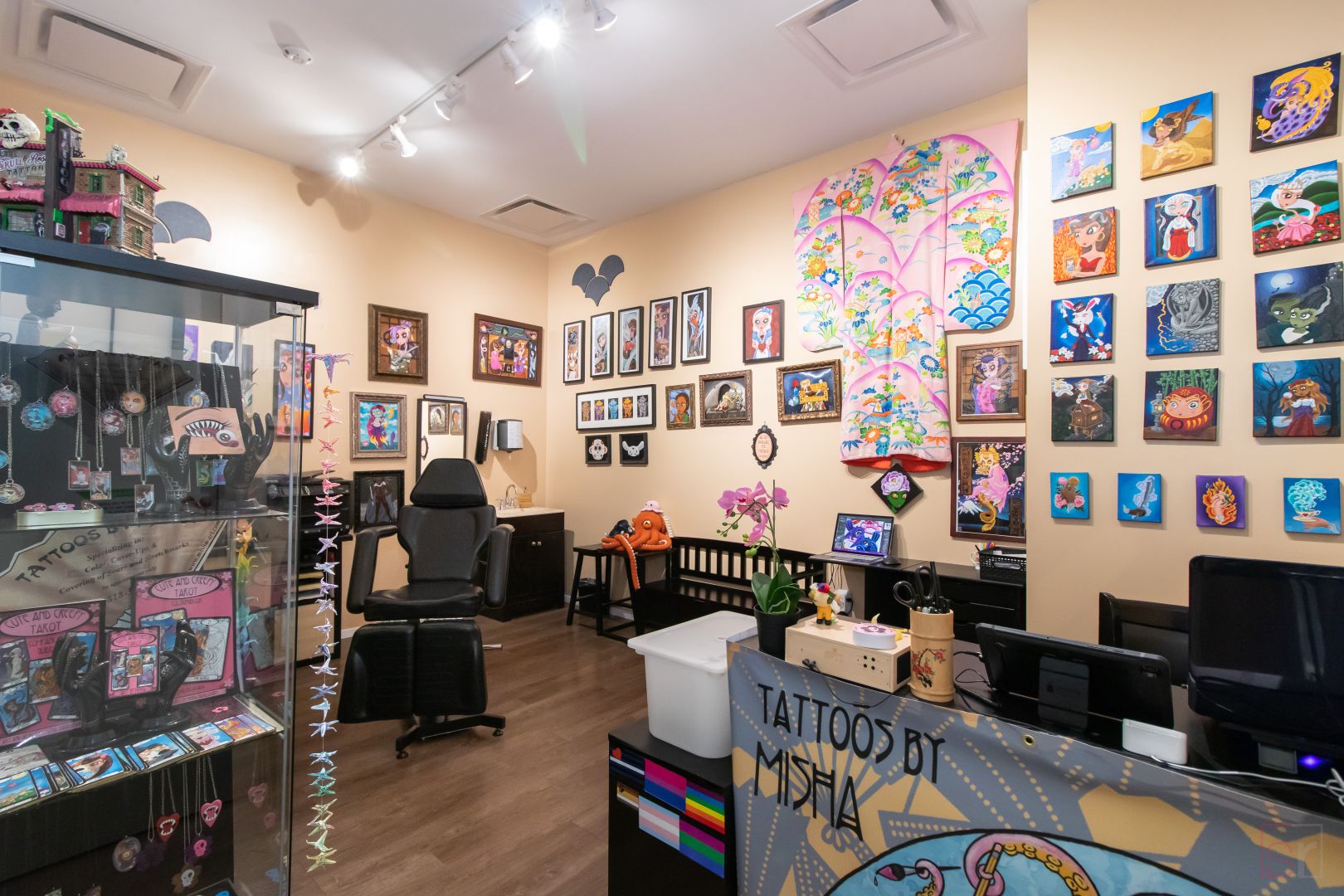
We had the good fortune of connecting with Misha – and we’ve shared our conversation below.
Hi Misha, can you share the most important lesson you’ve learned over the course of your career?
Understand that your business will change over time, and you need to be willing to change with it.
I started tattooing back in 1991 at that point tattooing was mostly replicating designs off the wall, called flash, for clients who just walked in off the street looking to get “something”. If they wanted the design smaller or bigger, I had to run down the street to the gas station to make a copy for 15 cents each, because we didn’t have a photocopier at our shop. Photocopies were very expensive at the time and it was a luxury our shop couldn’t afford.
My first tattoo stencils were handmade with carbon paper and were applied with deodorant stick.
Our palette of colors to buy was limited and many shops made their own inks.
Our tattoo machines were loud coil machines that were connected to a power supply with a long cord and controlled with a foot pedal.
We handmade every needle grouping we used and our needles and tubes were metal and had to be cleaned are sterilized between each use.
At the end of each tattoo we wrapped the tattoo in a gauze bandage or saran wrap. Healing was using antibiotic ointment.
Now 30 years later
Most tattoos are custom drawn or brought in by the client, some street shops still have tattoo flash on the walls, but it isn’t uncommon for artists to resize and rework the designs to fit the customer’s desire. And we now have a world of reference material with google and drawing programs like Clips studio and Procreate.
All shops have a photo copier or printer and a machine to make tattoo stencils, which make way more accurate stencils than the old hand drawn ones. We also have many options for applying the stencil to the skin.
Our selection of ink colors are huge and some brands offer inks that are vegan and presterilized.
The traditional tattoo machine is still in use as well as a few new quieter options and battery packs options make the machines cordless and easier for the artist to use.
Needles are now single use and can be bought premade and presterilized these can be either in a disposable cartridge or disposable tube. Some artists still prefer the feel of the metal tubes and they just need to properly clean and sterilize before they use them again.
At the end of the tattoo the artist can still use gauze, saran wrap is not recommended by most health departments. The newest development is medical-grade, adhesive bandage that can be used to help promote the healing of tattoos. It does this by covering the tattooed area and protecting it from outside elements that could impede healing such as germs or bacteria in dirt & water.
Some of these changes are recent like the bandages and the battery packs, but other have happened slowly over the past 30 years. And at each turn I needed to adapt my tools and craft with the changes. Altho technology is the big factor in recent changes, some of the other changes are driven by changes in clientele base and changes in how our society views tattoos and tattooing.
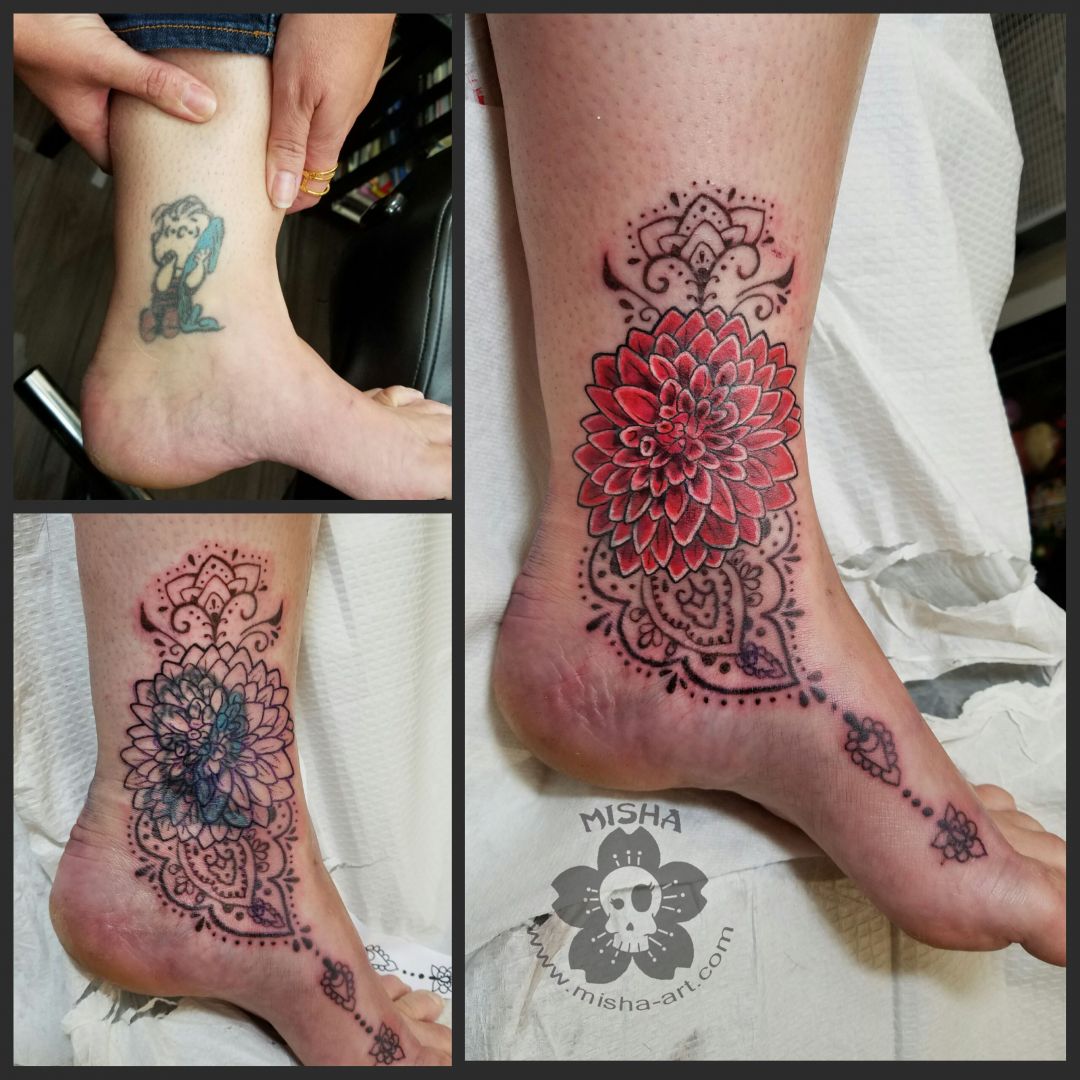
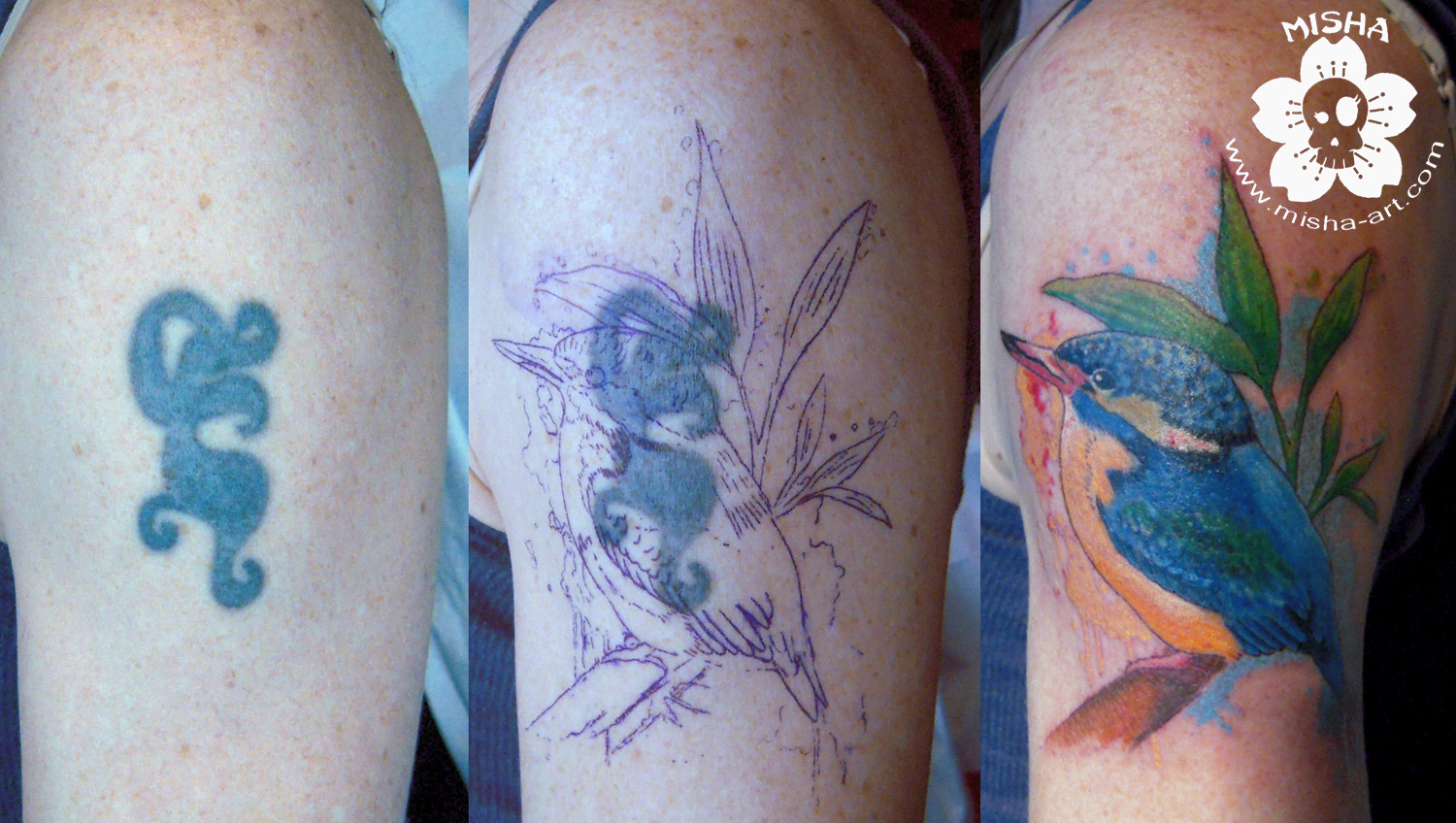
Alright, so let’s move onto what keeps you busy professionally?
Much of my career I just did tattoos on clients, with a preference for designing custom tattoos for my clients. On occasion a client would request a cover-up of an old tattoo, I did these but usually didn’t care for cover-ups because they could be so limiting on what I could do to cover the old tattoo. . Then one day a Client was telling me what she wanted to do to cover her old tattoo and none of her suggestions were going to work to make this tattoo look better. On a whim I asked her what she really wanted in that spot, if nothing was there, what would she want me to design. She told me and I realized that what she really wanted could be back engineered to cover the old tattoo much better than the things she thought would cover. That was my Ah Ha moment. I needed to quit thinking of what would cover and start thinking of ways to make what the client really wanted to do as the cover up. I needed to stop thinking of cover-up tattoos as Problems that needed dealing with and start thinking of them as puzzles that just needed to be solved. This doesn’t work for every tattoo cover-up, we still have some limitations depending on the old tattoo, but this was a much more productive way to come at cover-ups.
Cover ups became my specialty and I took on the name The Countess of Cover ups. Now 65%-70% of my work is cover-ups and many of these clients come back for custom tattoos.
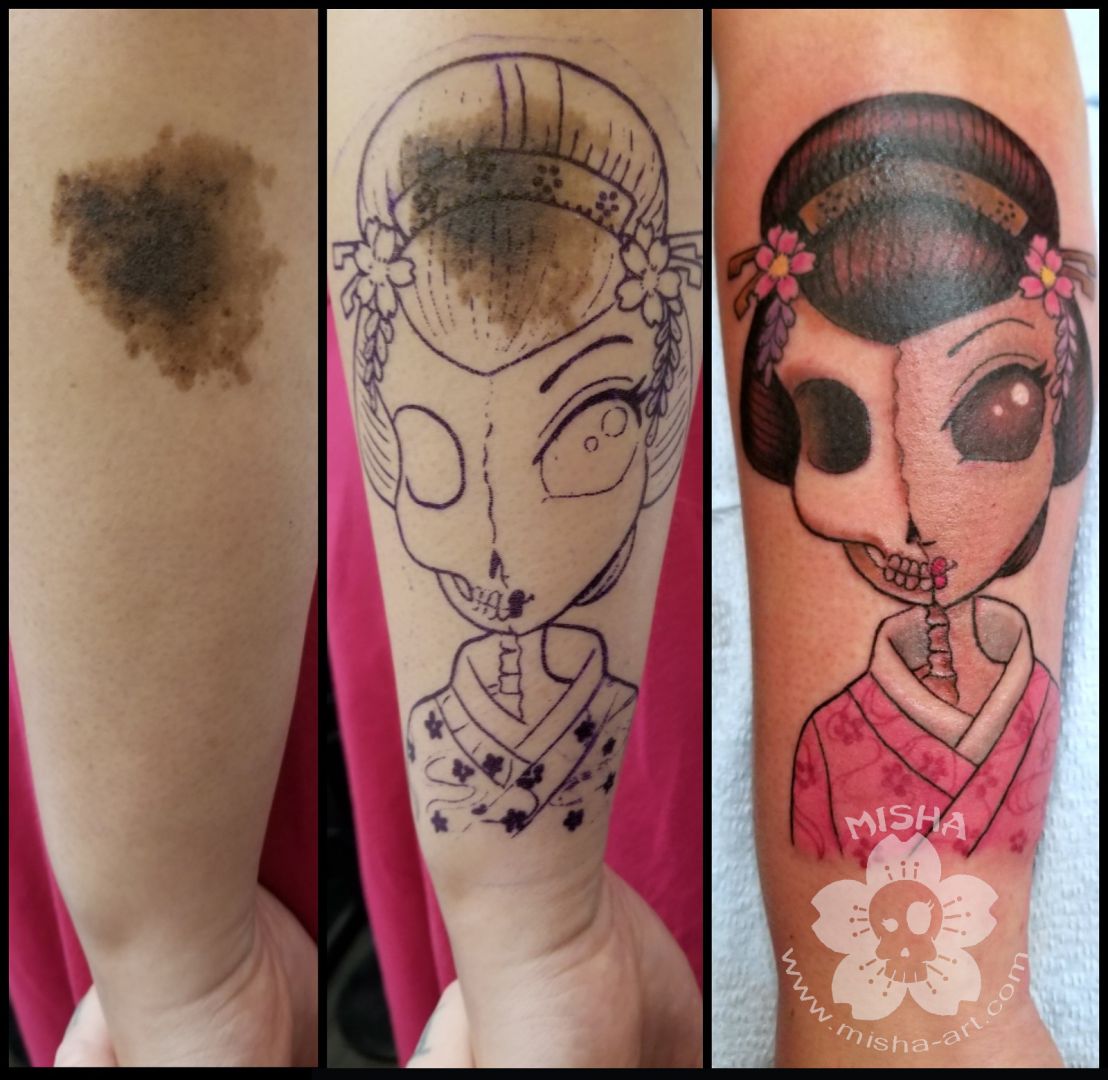
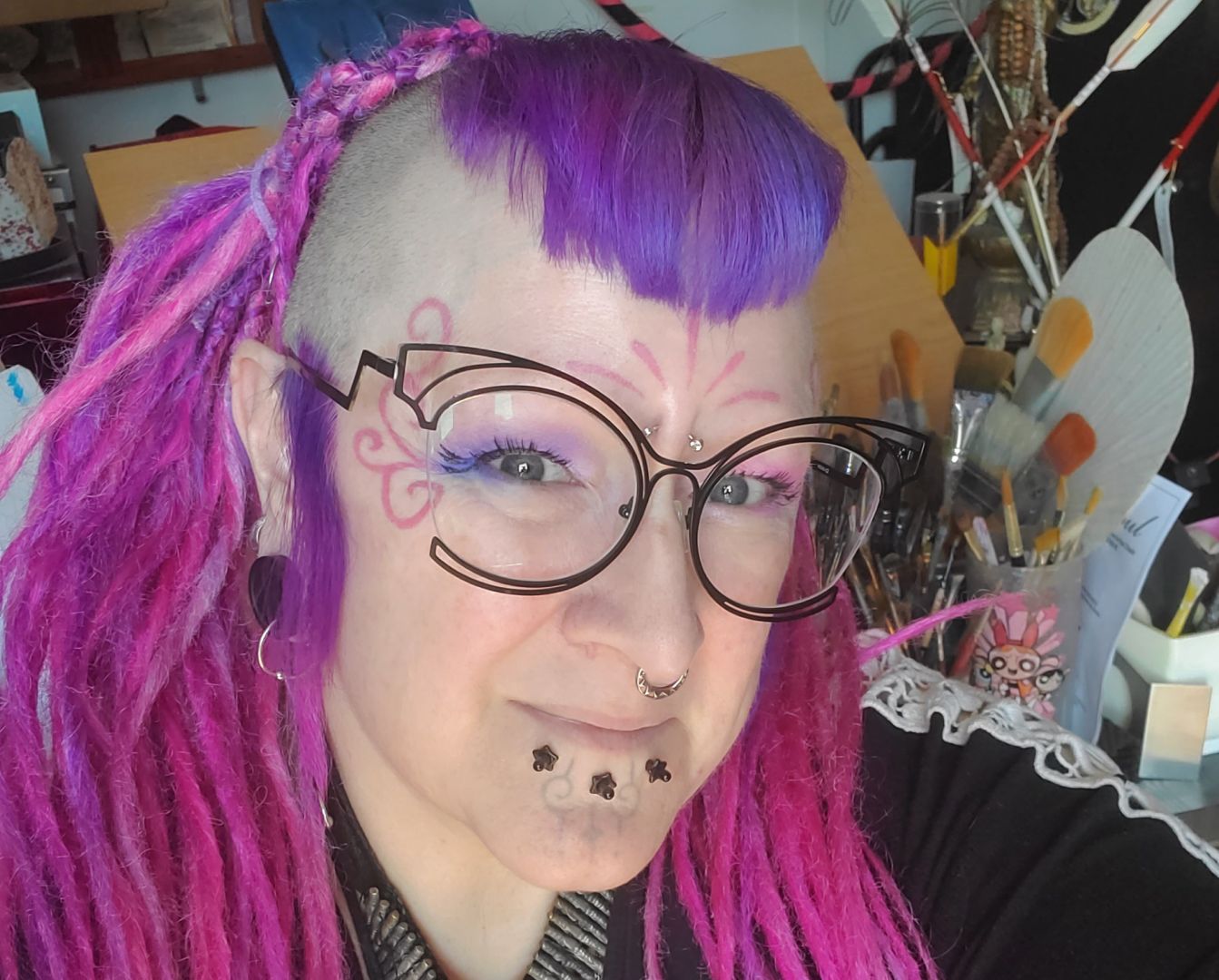
If you had a friend visiting you, what are some of the local spots you’d want to take them around to?
Little Tokyo We always take out of town guests to Little Tokyo. We grab some Ramen at Shin-Sen-Gumi. Then walk over to the Japanese Village Plaza to check out all the shops and drop into Nijiya Market to pick up sushi for dinner later that night.
Topanga canyon drive
Our other favorite trip is to Drive the 101 to Topanga Canyon Blvd, we take this from the suburban roads with shops, thru the twists and turns of Topanga Canyon, taking in the lovely views and the cute little community in the canyon. As the terrain gets rockier it all of a sudden flattens out and…. The is the beautiful Pacific Ocean! Make a right on PCH and take it to Malibu Sea food company to get a sourdough bowl of clam chowder and many more seafood delights. After take PCH south and visit SantaMonica and watch the sunset.
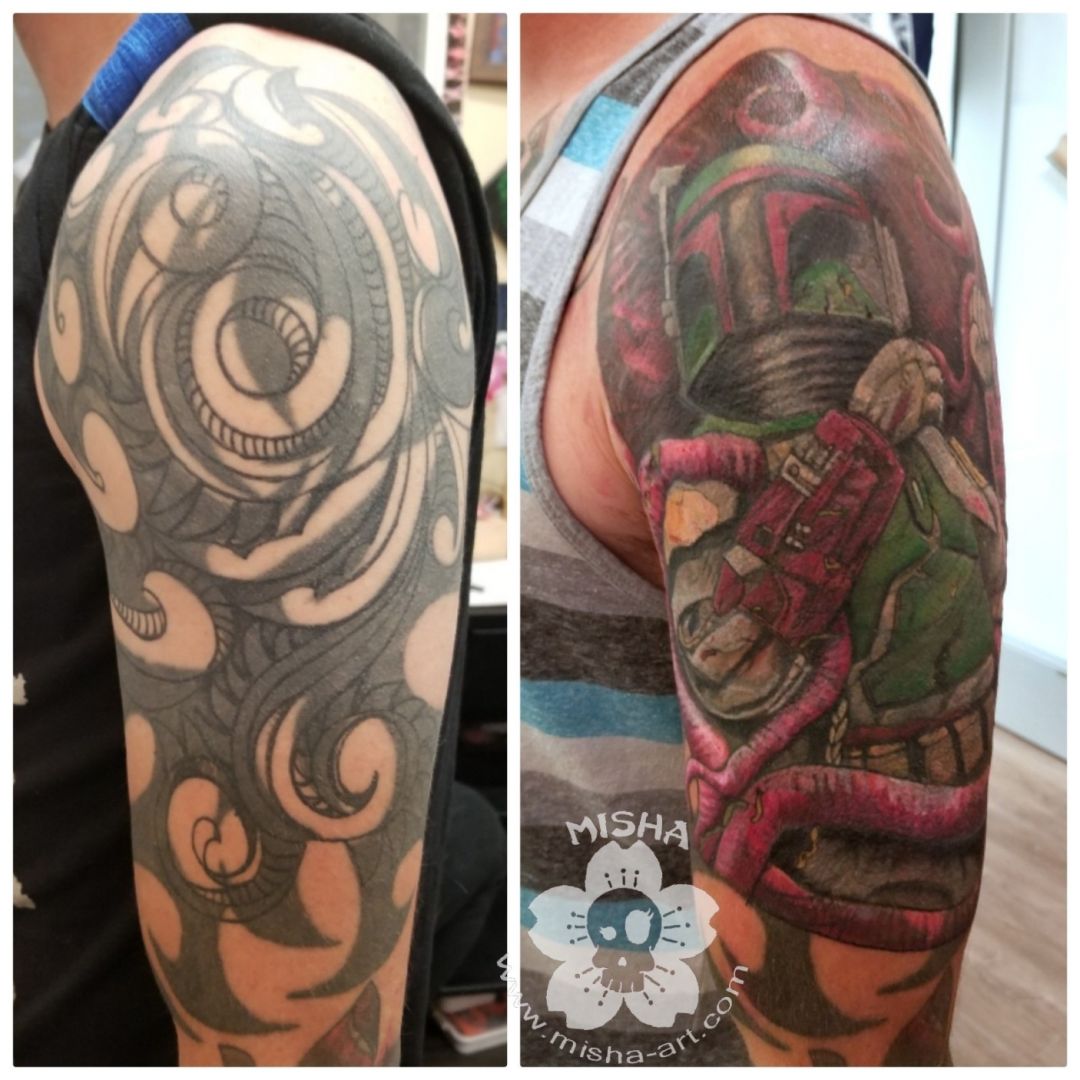
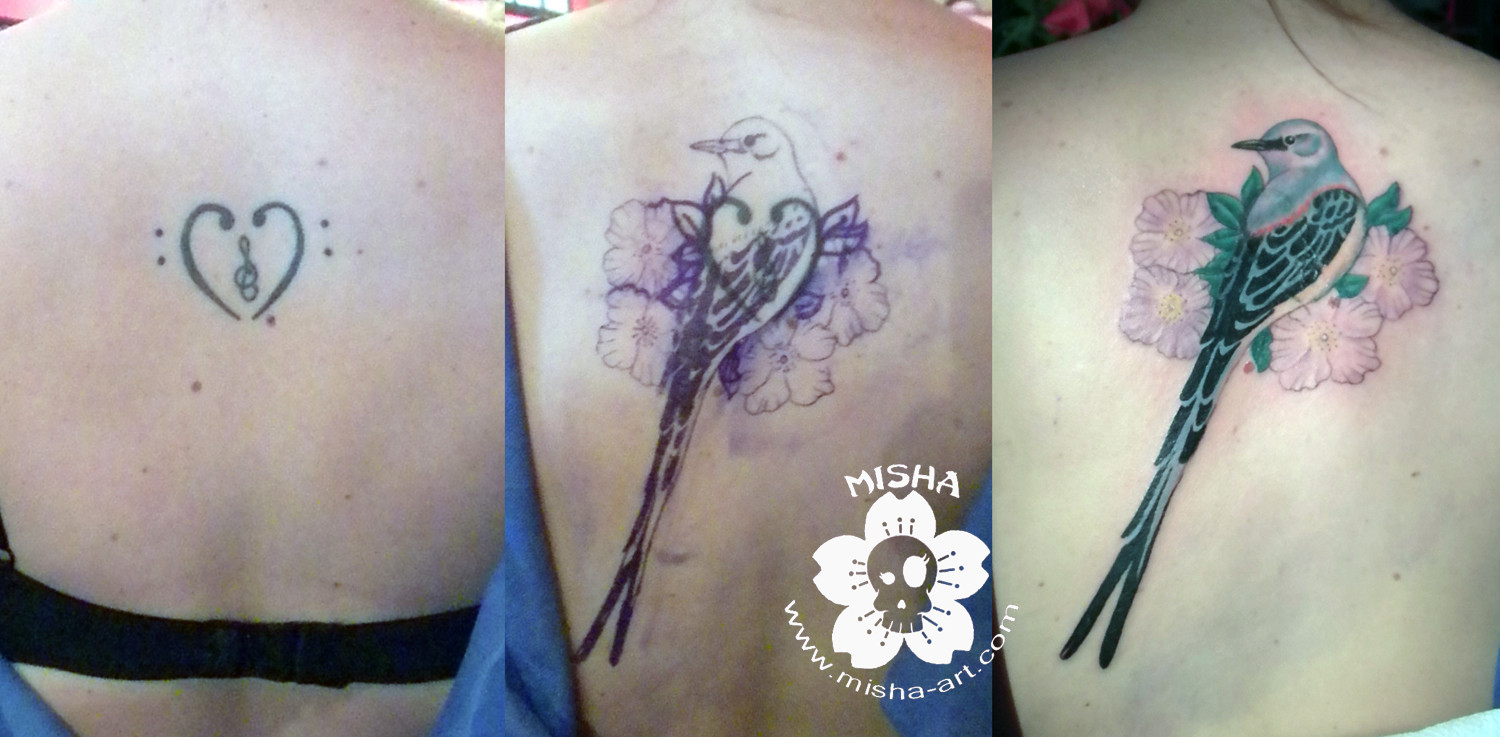
Who else deserves some credit and recognition?
My Husband who has been there to support me since I decided on this strange career path.
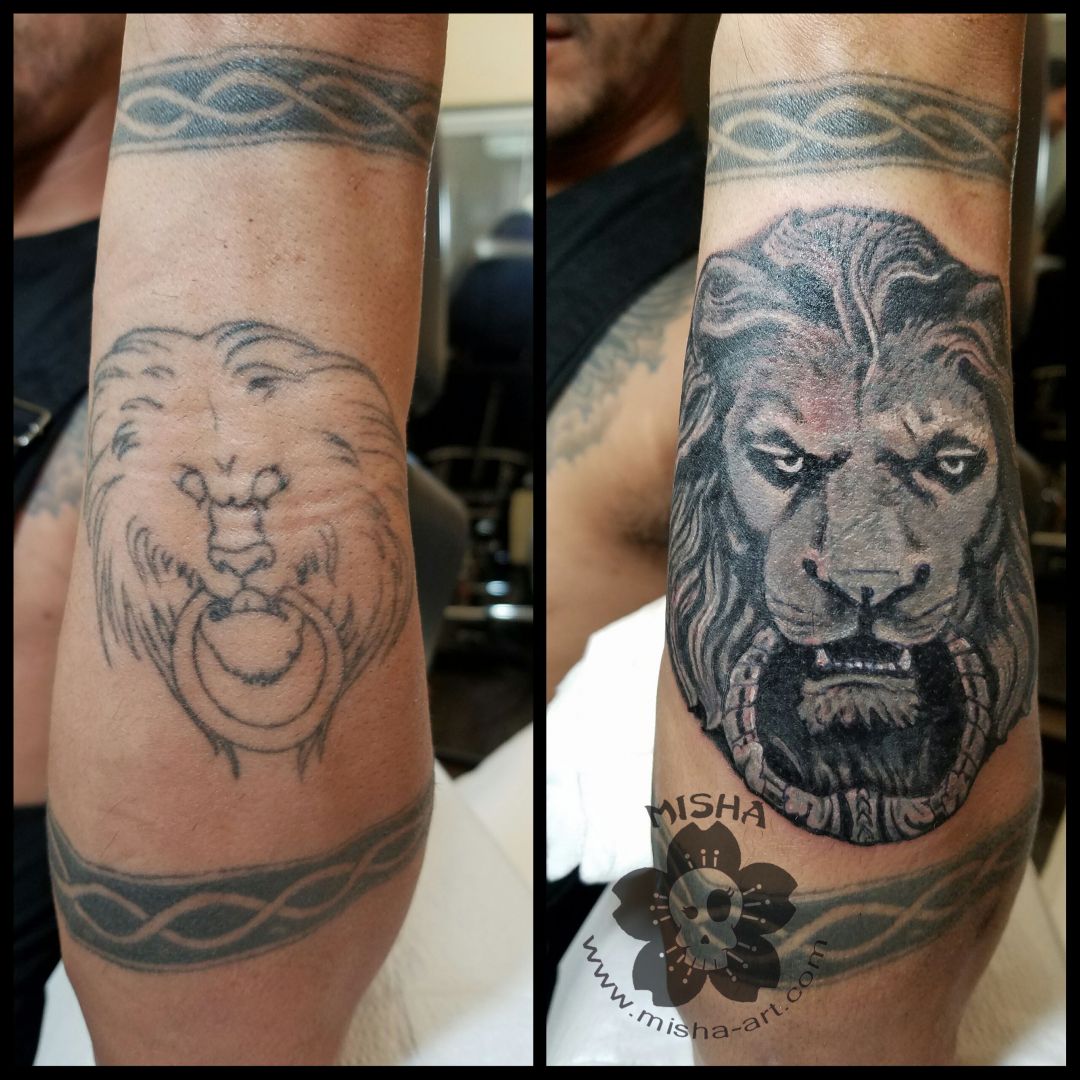
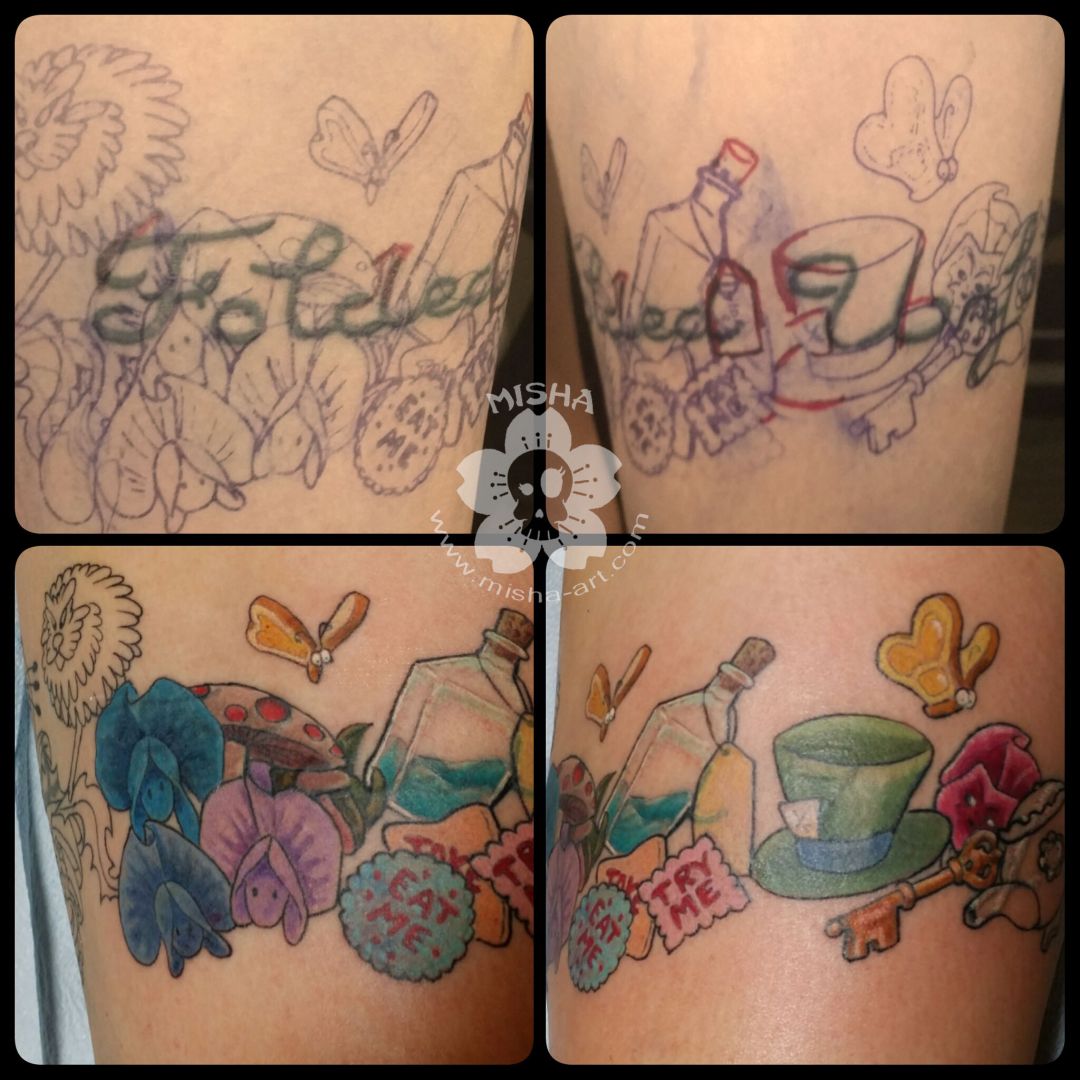
Website: misha-art.com
Instagram: https://www.instagram.com/thecountessofcoverups/
Facebook: https://www.facebook.com/TattoosByMisha
